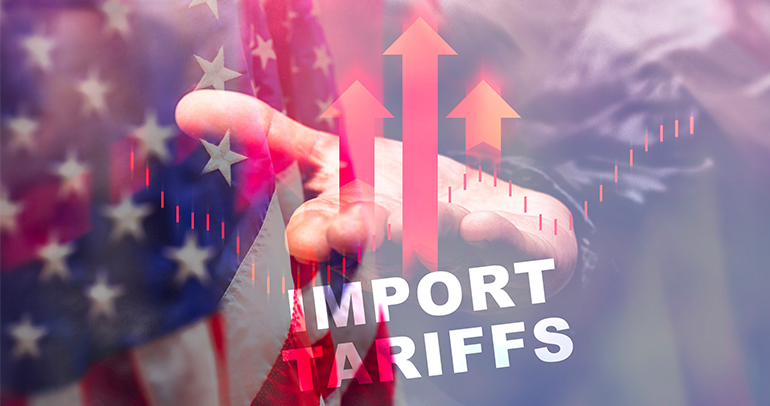
The telematics market is poised for a surge of growth in the coming years. The evolving regulatory landscape, a growing appetite for connected technologies and the ever-present pressure to remain competitive are all prompting fleet businesses to investigate the benefits of telematics solutions.
Escalent’s Telematics Path to Purchase report from our Fleet Advisory Hub™ insights program, which explores the needs, expectations and emotions of commercial vehicle and fleet decision-makers, aims to map this developing market by examining the process and behaviors exhibited by fleet decision-makers as they shop for, make decisions about, and ultimately onboard telematics solutions.
As our data demonstrate, the fleet telematics market is still in the late stages of early adoption. Of the 1,000 fleet professionals we talked to, only one-third (34%) have adopted a telematics solution, with more than 80% being first-time buyers.
With two-thirds of fleet leaders yet to lock in a telematics solution, there remains a significant opportunity for service providers to capture and expand their market share.
The Impact of Word of Mouth on Fleet Decision-Makers
Various factors are spurring fleet decision-makers to begin researching telematics solutions, but two stand out. Nearly half (44%) of decision-makers say a recommendation triggered their purchase journey. Further, around one-third (35%) report they began their search in response to an internal business improvement initiative wherein top-cited motivations include improving vehicle tracking (49%), increasing fleet productivity (41%) and enhancing safety (39%).
For the 44% of fleet leaders following a recommendation to invest in telematics technology, 28% of recommendations came from industry peers, 25% from colleagues and 20% from telematics service providers (TSPs). This emphasis on word of mouth presents an opportunity for TSPs to enhance their penetration in the market through recommendations while simultaneously putting the onus on providers to ensure they consistently meet or exceed customer expectations and thus remain top of mind for potential referrals.
A Nonlinear Shopping Process for Fleet Telematics Solutions
Once these professionals are engaged in the shopping process, the path to purchase is by no means linear or unilateral. On average, fleets involve two departments in the prepurchase phase—with 32% of businesses involving three or more departments. Further, 68% say they employ a joint decision-making process.
Shoppers are taking their time when choosing a telematics provider, too. Those who have adopted the technology spent an average of eight months investigating solutions before implementing them. Our data indicate that new adopters will be even more deliberate in their research and planning. Current shoppers say they have already spent an average of seven months considering offerings and anticipate it will be another nine until they purchase and integrate a telematics solution into their fleet business.

To successfully move fleets down the telematics purchase funnel, service providers will need to be sensitive to this dynamic, being able to identify where fleet decision-makers are in their telematics shopping journey and taking the time to deeply understand the objectives and needs of the fleet business in question. Then service providers can ensure their marketing strategies and consultative services align with their customers’ progress toward telematics procurement.
Open Minds and Ample Opportunity for Telematics Providers
When weighing where to shop for a telematics solution, fleet leaders in our study gravitate toward a group of “big four” providers—two telecommunications brands and two vehicle manufacturers—that fleets are often already partnered with, and trust. More than one-third (36%) of decision-makers say Verizon Connect is in their consideration list. AT&T Fleet Complete ranks second (28%), followed by Ford Pro Telematics (27%) and OnStar Business Solutions (26%).
That said, fleet shoppers are also curious about dedicated TSPs. Fourteen percent would include Geotab and TomTom in their consideration lists, and 11% would include Omnitracs and Samsara.
There is space for other automotive industry partners to drive the purchase journey, too. While 57% of fleet leaders list TSPs as a shopping channel, vehicle manufacturers and dealers (38%), fleet management companies (35%) and transportation management system providers (27%) are also popular. With no majority leader among providers, these decision influencers could establish a foothold in the market by solidifying a partnership with a dedicated TSP.
Connecting Small and Mid-Sized Fleets With Telematics Solutions
At present, fleets running at least 50 vehicles are setting the pace for adoption. Sixty-six percent of large fleets (500 vehicles or more) and 55% of mid-sized fleets (51 to 499 vehicles) say they have adopted telematics at some level. As smaller fleets come to the table, service providers typically find their demands differ from those of their larger counterparts. Providers must focus on developing flexible value propositions that resonate with a range of fleet stakeholders and reflect the needs of a variety of business models. This is vital for long-term growth as well as for the nearer-term opportunity to connect small and mid-sized fleets with telematics solutions that meet their objectives and smaller budgets.
Fleet decision-making is collaborative and involved, and although the market has been shaped by the preferences of the largest players in the business, it is gradually shifting toward smaller fleets and mixed fleet businesses. The service providers who try to understand how fleets of all sizes are approaching the telematics purchase journey will be best placed to align their products and messaging with the expectations of the next generation of adopters and, in doing so, take the lead in connecting the fleet.
Moving the Telematics Market Beyond the Late Stages of Early Adoption
Despite existing for more than a decade, the telematics industry needs to move beyond early adopters. Fortunately, there is plenty of room for growth. Most fleet decision-makers have little unaided recall of telematics brands and, although the “big four” are trusted brands that have strong reputations and top the list for highest initial shopping consideration, there is ample opportunity to challenge them, as fleet leaders are open to shopping for telematics solutions through other partners in their circle.
To grow mindshare among fleet decision-makers and establish leadership, telematics providers need to do three key things:
- Deeply understand the different telematics purchase journeys, objectives, challenges and needs of diverse fleet stakeholders and different business sizes
- Tailor offerings, marketing and value propositions/messaging to specific customers’ pain points and priorities
- Deliver solutions that perform as promised, or better, and ensure strong post-sale customer experience to facilitate positive word-of-mouth recommendations
If you would like to learn more about our findings, Fleet Advisory Hub, or how our commercial vehicle and fleet experts can help you grow your business, please reach out to us.
Want to learn more? Let’s connect.








